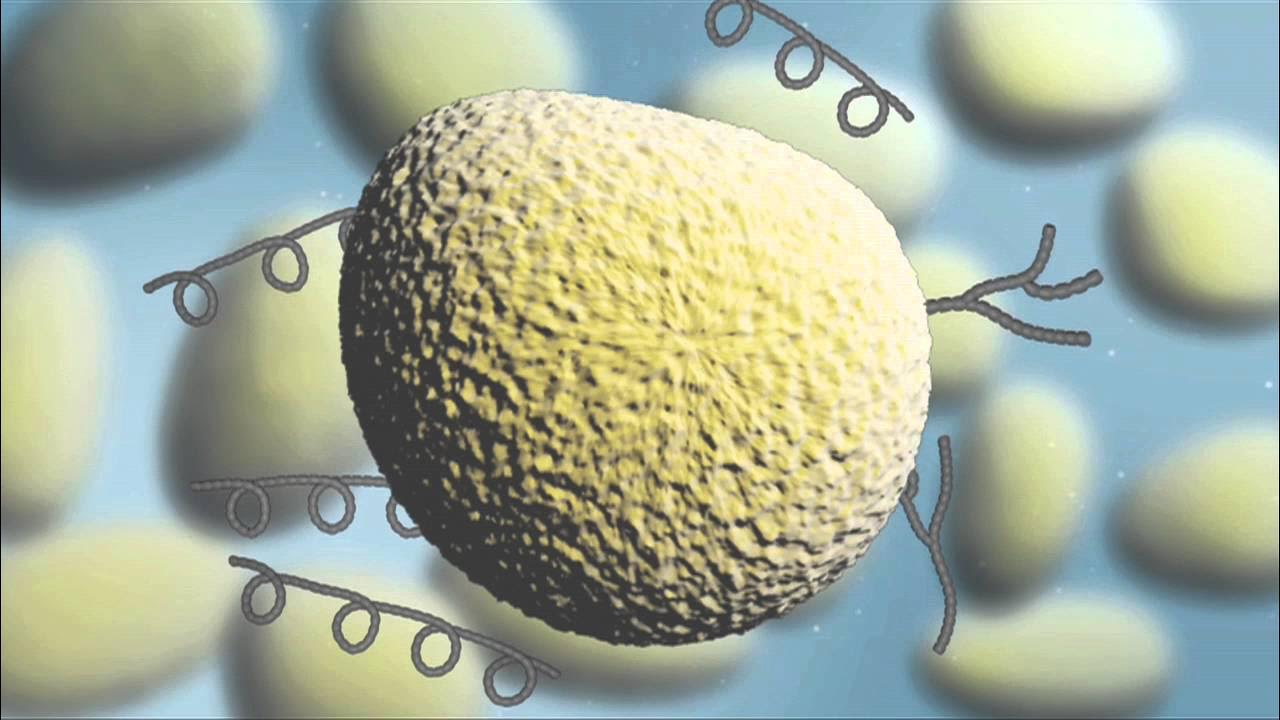How a Chemist Makes the Softest Bread You'll Ever Eat
Summary
TLDRThis video explores the science behind Japanese milk bread's fluffiness, attributing it to starch gelatinization. The process involves heating flour to break down starch's crystalline and amorphous regions, making bread soft and resistant to staling. The presenter conducts an experiment with different percentages of pre-gelatinized starch, revealing that while higher percentages yield softer bread, it can compromise structure. The video also discusses bread's resistance to staling due to shorter starch chains post-gelatinization and suggests freezing as a better storage method than refrigeration.
Takeaways
- 🍞 Japanese milk bread is known for its soft, fluffy texture and resistance to going stale.
- 🌾 Starch is the key ingredient in bread, making up about 70-75% of flour's composition.
- 🔬 The structure of starch granules includes both crystalline and amorphous regions, which affect how they interact with water and heat.
- 💧 Starch granules are insoluble in water below 60 degrees Celsius, but above this temperature, they undergo gelatinization, which is crucial for bread texture.
- 🔥 The process of gelatinization involves heating starch with water, causing it to swell and form a gel, which is irreversible.
- 🍞 The Tangzhong and Yudane methods involve pre-gelatinizing starch by heating a portion of the flour with water or milk before making the bread dough.
- 📈 Research shows that increasing the percentage of pre-gelatinized starch in bread can make it softer but may reduce its volume and gas retention.
- 🕒 Pre-gelatinizing starch before baking allows for more controlled gelatinization, leading to a softer bread texture.
- 🍞 The gelatinization process can delay staling in bread because it affects the retrogradation of starch molecules.
- ⏰ Bread with pre-gelatinized starch stays fresher for longer due to reduced staling, which is also influenced by the interaction of fat molecules with gelatinized starch.
Q & A
What is the key ingredient that makes Japanese milk bread so fluffy and soft?
-The key ingredient is starch, which is found in flour. Starch granules have crystalline and amorphous regions that, when heated, can absorb water and break apart, contributing to the soft and fluffy texture of the bread.
What is the difference between amylose and amylopectin in starch molecules?
-Amylose is a long linear chain of glucose molecules, while amylopectin is a branched molecule with many linked chains, making it typically larger than amylose. These two forms are the main components of starch.
Why does starch granules' structure matter in bread making?
-Starch granules' structure matters because the crystalline and amorphous regions within them respond differently to heat and water. This affects how they gelatinize, which in turn impacts the texture of the bread.
What happens to starch granules when heated above 60 degrees Celsius?
-When starch granules are heated above 60 degrees Celsius, they swell and form a gel or paste due to the absorption of water. This process is irreversible, and the granules remain in a gel or paste state even after cooling.
What is the Tangzhong method and how does it affect bread texture?
-The Tangzhong method involves simmering water, milk, and flour together to create a preheated starch mixture that is then added to the dough. This process gelatinizes the starch, resulting in a fluffier and softer bread texture.
Why does pregelatinizing starch in bread making lead to a softer bread?
-Pregelatinizing starch ensures that a greater proportion of the starch undergoes gelatinization before baking even begins, which leads to a more gradual and controlled gelatinization process during baking, resulting in a softer bread texture.
How does the Yudane method differ from the Tangzhong method?
-The Yudane method involves pouring boiling water over flour and letting it sit before making the bread, while the Tangzhong method simmers water, milk, and flour together. Both methods aim to gelatinize starch for a softer bread texture, but they differ in the specific process used.
What is the effect of pregelatinized starch on the staling process of bread?
-Pregelatinized starch in bread becomes more susceptible to breakdown by amylases during baking, resulting in shorter starch chains. Since retrogradation, the process that leads to staling, requires starches of a minimum length, bread with pregelatinized starch experiences less staling.
Why does storing bread in the fridge accelerate staling?
-Storing bread in the fridge accelerates staling because retrogradation, the process where starch molecules reassociate, happens faster at cooler temperatures. Freezing bread, on the other hand, stops retrogradation, preserving its freshness longer.
How can the staling of bread be temporarily reversed?
-The staling of bread can be temporarily reversed by reheating it in the microwave, which causes the starch molecules to gelatinize again, creating a softer texture. However, once the bread cools down, it will become stale again.
What is the role of fats in bread and how do they interact with gelatinized starch?
-Fats in bread interact with gelatinized starch molecules, creating a support structure that can delay staling or retrogradation. This interaction provides additional resistance to the bread becoming stale, contributing to its freshness.
Outlines

Cette section est réservée aux utilisateurs payants. Améliorez votre compte pour accéder à cette section.
Améliorer maintenantMindmap

Cette section est réservée aux utilisateurs payants. Améliorez votre compte pour accéder à cette section.
Améliorer maintenantKeywords

Cette section est réservée aux utilisateurs payants. Améliorez votre compte pour accéder à cette section.
Améliorer maintenantHighlights

Cette section est réservée aux utilisateurs payants. Améliorez votre compte pour accéder à cette section.
Améliorer maintenantTranscripts

Cette section est réservée aux utilisateurs payants. Améliorez votre compte pour accéder à cette section.
Améliorer maintenant5.0 / 5 (0 votes)






